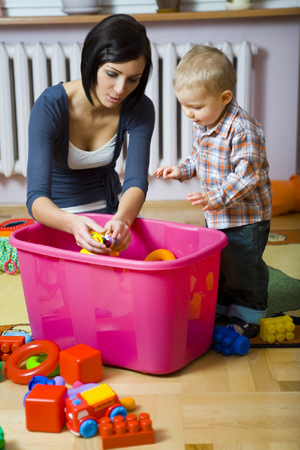Babysitters
 Finding babysitters for a child with a bleeding disorder can be very tough. Sometimes the parents are afraid to leave their child with someone else. Sometimes a sitter is unwilling to be responsible for a child with special needs. The best way to solve either of these problems is for the parents to teach the sitter about the bleeding disorder. Teaching the sitter is necessary for the child's safety. At the same time, the sitter will feel more confident and know how to handle problems. A sitter who understands a child's bleeding disorder is more likely to react the right way to the child, his or her actions, and any injuries.
Finding babysitters for a child with a bleeding disorder can be very tough. Sometimes the parents are afraid to leave their child with someone else. Sometimes a sitter is unwilling to be responsible for a child with special needs. The best way to solve either of these problems is for the parents to teach the sitter about the bleeding disorder. Teaching the sitter is necessary for the child's safety. At the same time, the sitter will feel more confident and know how to handle problems. A sitter who understands a child's bleeding disorder is more likely to react the right way to the child, his or her actions, and any injuries.
Most babysitters will know very little about bleeding disorders. What they think they know may be wrong. This wrong information could make them scared of what might happen to the child. Before a sitter stays alone with the child the first time, the parents should meet with the sitter to explain the basics of the bleeding disorder. The parents should also tell what their child is or is not allowed to do, what to do when the child misbehaves, and how to handle an emergency.
Sitters need to know that the child will not bleed to death. Tell them that they can handle any emergency. It is a good idea to write down what to do in an emergency and give it to the sitter. Keep another copy by the phone.
The Note to the Babysitter is a sample letter about hemophilia that can be printed and given to a babysitter. It is available in PDF and Word formats. The note includes emergency phone numbers to post by the telephone. Each time a sitter comes, you should write down the address and phone number for the place where you are going. Also, write down any special instructions.
